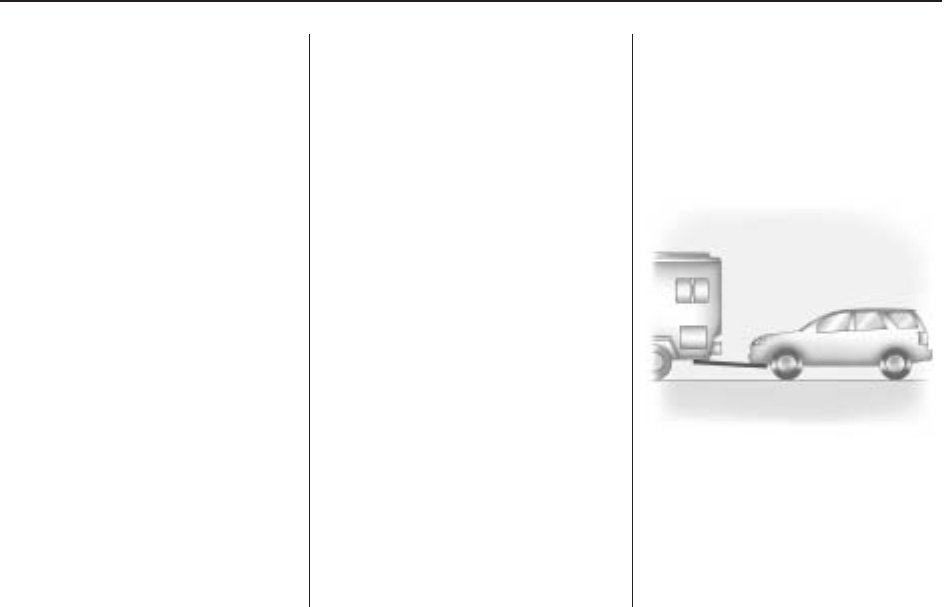
Towing
Towing Your Vehicle
To avoid damage, the disabled
vehicle should be towed with all four
wheels off the ground. Consult
your dealer/retailer or a professional
towing service if the disabled
vehicle must be towed. See
Roadside Service on page 7-6
To tow the vehicle behind another
vehicle for recreational
purposes — such as behind a
motorhome, see “Recreational
Vehicle Towing” following.
Recreational Vehicle
Towing
Recreational vehicle towing means
towing the vehicle behind another
vehicle – such as behind a
motorhome. The two most common
types of recreational vehicle
towing are known as “dinghy
towing” — towing the vehicle with all
four wheels on the ground, and
“dolly towing” — towing the vehicle
with two wheels on the ground
and two wheels up on a device
known as a “dolly”.
Here are some important things to
consider before recreational
vehicle towing:
• What is the towing capacity of
the tow vehicle? Be sure to
read the tow vehicle
manufacturer’s
recommendations.
• What is the distance that will be
travelled? Some vehicles have
restrictions on how far and
how long they can tow.
• Is the proper towing equipment
going to be used? See your
dealer/retailer or trailering
professional for additional advice
and equipment
recommendations.
• Is the vehicle ready to be towed?
Just as preparing the vehicle for
a long trip, make sure the
vehicle is prepared to be towed.
See Before Leaving on a
Long Trip on page 4-30.
Dinghy Towing
This full-time four-wheel-drive
vehicle can be dinghy towed from
the front. These vehicles can also be
towed by placing them on a
platform trailer with all four wheels
off the ground. These vehicles
cannot be towed using a dolly.
4-40 Driving Your Vehicle
